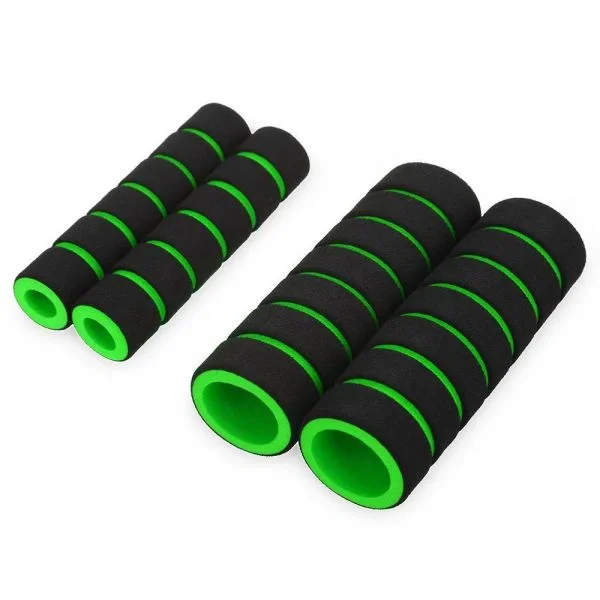Rubber and plastic grips are widely used in various industries and applications, providing comfort, control, and safety to users. These grips are commonly found on tools, equipment, handles, and even in consumer products. Understanding the durability and longevity of rubber and plastic grips is crucial for manufacturers, consumers, and researchers alike. In this article, we will delve into the factors that affect the durability and longevity of rubber and plastic grips, exploring their material properties, manufacturing processes, and environmental considerations.
Material Properties of Rubber and Plastic Grips
Rubber Grips:
Rubber grips are typically made from elastomers, which are polymers with high elasticity. The material properties of rubber, such as hardness, resilience, and resistance to abrasion, play a significant role in determining the durability and longevity of rubber grips. Different types of rubber, such as natural rubber, synthetic rubber, and thermoplastic elastomers, exhibit varying levels of these properties.
Plastic Grips:
Plastic grips are commonly made from thermoplastics, which are polymers that can be melted and re-molded. The material properties of plastic, including hardness, flexibility, and impact resistance, influence the durability and longevity of plastic grips. Various types of plastics, such as polyethylene, polypropylene, and PVC, offer different levels of these properties.
Manufacturing Processes for Rubber and Plastic Grips
Rubber Grip Manufacturing:
The manufacturing process for rubber grips involves several steps, including compounding, molding, and curing. Compounding refers to the mixing of rubber with additives, such as fillers, plasticizers, and curing agents, to achieve desired properties. Molding is the process of shaping the rubber compound into the desired grip design using techniques like injection molding or compression molding. Curing involves subjecting the molded rubber grip to heat and pressure to achieve cross-linking, which enhances its durability and longevity.
Plastic Grip Manufacturing:
Plastic grip manufacturing also involves several steps, such as material selection, molding, and finishing. Material selection is crucial as different types of plastics offer varying levels of durability and longevity. Molding techniques, such as injection molding or extrusion, are used to shape the plastic into the desired grip design. Finishing processes, such as trimming, polishing, and surface treatments, are applied to enhance the grip's appearance and functionality.

Factors Affecting the Durability and Longevity of Rubber and Plastic Grips
Environmental Factors:
Rubber and plastic grips are exposed to various environmental conditions, such as temperature, humidity, UV radiation, and chemicals. Extreme temperatures can cause rubber to become brittle or plastic to deform, affecting their durability. High humidity can lead to the growth of mold or mildew on rubber grips. UV radiation can degrade the material properties of both rubber and plastic grips over time. Chemical exposure, such as contact with oils, solvents, or cleaning agents, can also deteriorate the grips' performance and lifespan.
Mechanical Factors:
The durability and longevity of rubber and plastic grips are influenced by mechanical factors, including load, impact, and wear. Grips subjected to heavy loads or frequent impacts may experience deformation, cracking, or failure. Abrasive or repetitive use can cause wear and tear on the grip's surface, affecting its gripability and comfort. The design and ergonomics of the grip also play a role in distributing forces and reducing stress concentrations, thereby enhancing its durability
Testing and Evaluation of Rubber and Plastic Grips
To assess the durability and longevity of rubber and plastic grips, various testing methods are employed. These tests evaluate properties such as hardness, tensile strength, elongation, tear resistance, and chemical resistance. Accelerated aging tests, which simulate environmental conditions over an extended period, can provide insights into the grips' performance over time. Additionally, user feedback and field testing are valuable in understanding real-world usage scenarios and identifying potential improvements.
Maintenance and Care for Rubber and Plastic Grips
Proper maintenance and care can significantly extend the durability and longevity of rubber and plastic grips. Regular cleaning using mild soap and water can help remove dirt, oils, and contaminants that may degrade the grip's performance. Avoiding exposure to extreme temperatures, direct sunlight, and harsh chemicals can prevent premature degradation. Applying protective coatings or using grip covers can provide an additional layer of protection. Inspecting the grips periodically for signs of wear or damage and replacing them when necessary is also essential for ensuring optimal performance and safety.

Conclusion
Rubber and plastic grips are essential components in various industries and applications, providing comfort, control, and safety to users. Understanding the factors that affect their durability and longevity is crucial for manufacturers, consumers, and researchers. By considering the material properties, manufacturing processes, environmental factors, and proper maintenance, we can uncover the secrets to maximizing the durability and longevity of rubber and plastic grips.
